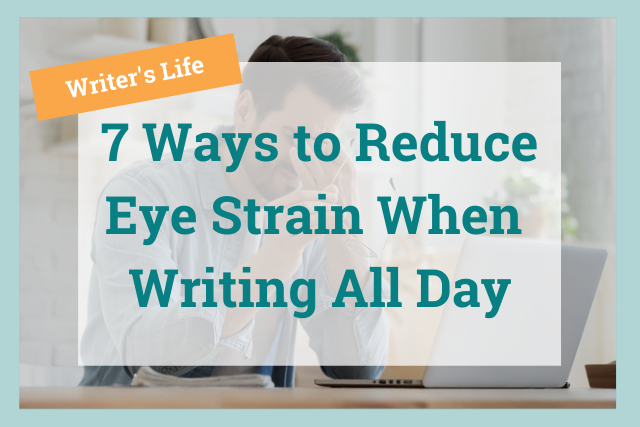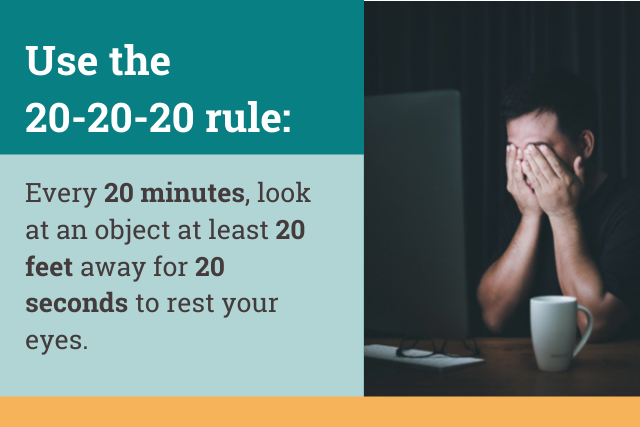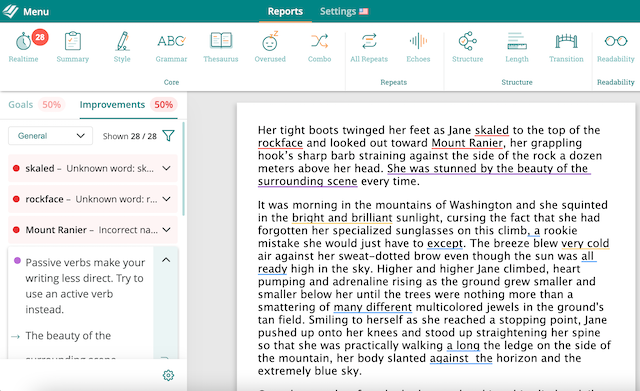
All day long, I sit or stand at my computer desk.
I have no commute. I have no coworkers. Outside of taking a break to go to the bathroom, I’m in my office staring at a computer screen.
When most online writers kick off a conversation like this, they usually focus on the sitting.
“SITTING IS THE NEW SMOKING,” they like to say.
And yes, I do sit too much. But I’m not so concerned about my body. I’m far more concerned with my eyes.
Those of us who work in front of computers all day long know that eye strain is a real problem. I know it is for me.
If I’m deeply invested in my work, I’m not looking away from my computer monitor. I stare for hours as I type out page after page of copy (I can’t afford to look away, I’ve got a deadline to meet!).
When I’m done for the day and I head downstairs to make dinner for my family, my wife knows how much writing I did that day purely by the look in my eyes.
That’s because my eyes are tired. They are drooping and sometimes even bloodshot. They are dried out and uncomfortable. And most likely, I have a nasty headache.
I’m not alone in this, either.
The Eye Strain Epidemic
One study suggested that 50% of the population suffers from eye strain. That’s a lot of people! And that study was published in 2018, long before the world shoved everyone into their homes and out of office buildings. Now, not only are we staring at the computer all day for our work, but our meetings require us to stare into that screen as well.
Those of us who suffer from eye strain are dealing with:
- Headaches
- Dry eyes
- Blurred vision
- Fatigue
- Increased sensitivity to light
- Trouble focusing
- Eye pain or soreness
These aren’t minor issues. Eye strain isn’t permanent, but even having one of these problems is going to keep you from getting your writing done.
Me? I get headaches. Nasty ones. And whenever I find myself lying on the floor of my office, I tell myself, “I need to really be more mindful of eye strain.”
Why Is This Happening?
You might be tempted to think that the reason why eye strain is so prevalent is because these devices we stare at are too harsh on your eyes.
And yes, you’d be right. But that doesn’t explain the whole story. After all, plenty of things in this world throw off a lot of light and are harsh on our eyes. Why are digital devices so different?
There are two reasons.
First, the type of light being thrown off is not natural.
The screens we’re looking at are loaded with blue light. Blue light is fine, and is found in certain light sources. But blue light messes with your body’s clock.
Your eyes weren’t made to process that much blue light all the time, and that’s why they get overwhelmed.
In addition, while you can’t actually see it with the naked eye, these screens aren’t putting off a constant light. They are technically shooting bursts of light at your eyes repeatedly.
That’s why you’re far more likely to get strained eyes looking at a screen instead of hanging out on a sunny day. The sun is constant. Your phone is not.
Second, our behaviors are making it worse.
Despite our best intentions, the way we look at these devices really don’t do us any favors.
We’ll cover this in the next section, but we don’t realize the dumb things we’re doing with our eyes.
When sitting at a computer, we stare into the screen for hours on end, which is bad enough. But we also don’t blink as often as we should be, and that leads to irritated eyes as much as anything.
All is not lost, however. With a few tweaks of your environment and behavior, you can reduce your eye strain considerably—and potentially eliminate the discomfort and headaches that keep you from working at full productivity most days.
Try These 7 Simple Tweaks, from FREE to Cheap
Lots of people want to sell you products and apps that they claim will eliminate eye strain.
As long as you are working at a computer, though, eye strain is probably going to be an issue in some capacity.
You can start working on it today without breaking the bank. Here’s how.
1. Follow the 20-20-20 rule
This rule is every optometrist’s motto when discussing eye strain, because it works. Every 20 minutes, look at something 20 feet away for at least 20 seconds.
Set a timer on your phone to keep you honest. It relaxes your eye muscles, which will in turn recharge your focusing batteries.

2. Turn down the brightness
I love a bright, crisp display on my computer. I also love eyes that function properly. So I turn down the brightness whenever possible. This is especially true when I’m reading from my tablet at night. Speaking of which…
3. Use a Kindle whenever possible
Any e-ink device will do. These devices are designed to mimic paper’s effect on the eyes. They will be far better for you in the long run when you want to do a bit of reading.
4. Adjust your device’s display to be warmer.
Blue light is the problem, but there are apps and settings that can reduce blue light.
Every device is a little different, but most have the ability to warm up the display as the sun goes down, reducing the blue light exposure that is wearing out your eyes. Otherwise, an app like f.lux will do just fine.
5. Blink more
Close your eyes and let those eyelids moisten up the eyeballs. You might think you’re blinking enough, but you’re probably not. Focus on getting some good, long blinks in there from time to time and you can prevent your eyes from drying out and getting irritated.
6. Get a pair of blue light glasses
These glasses filter out all the blue light so that you are free to look at your device’s display without pumping your eyeballs full of the stuff.
I’m wearing these as I type right now, and they are very effective at preventing eye strain. Plus, a two-pack only cost me $20. I keep one pair on my desk and one pair on my nightstand.
7. Put your devices away for the evening
Yes, I saved the toughest tip for last.
When you’re done working for the day, try to put some distance between you and your phone’s screen. Keep it in your pocket or put it across the room and do something else.
Too many of us are leaving our computer monitors only to stare at our phones all night—and that doesn’t give our eyes the rest that they need.
Reduce Your Screentime
If you spend hours each day reading and re-reading your copy, manuscripts, or even your emails to check for errors, there's another way.
ProWritingAid will highlight grammar, spelling, and style errors in your work, reducing the number of times you need to read over it. The easy-to-use suggestions allow you turn your writing from good to great in just a few clicks, meaning less time staring at a screen and more time ticking items off your (paper) to-do list.

It’s Up to You
Nobody is going to fix this problem for you. There isn’t a magic pill.
If you want to prevent eye strain from ruining your productivity, you need to be proactive. Implement a few of these steps and the quality of your life, work, and your writing should go up substantially.
It sure did for me.


